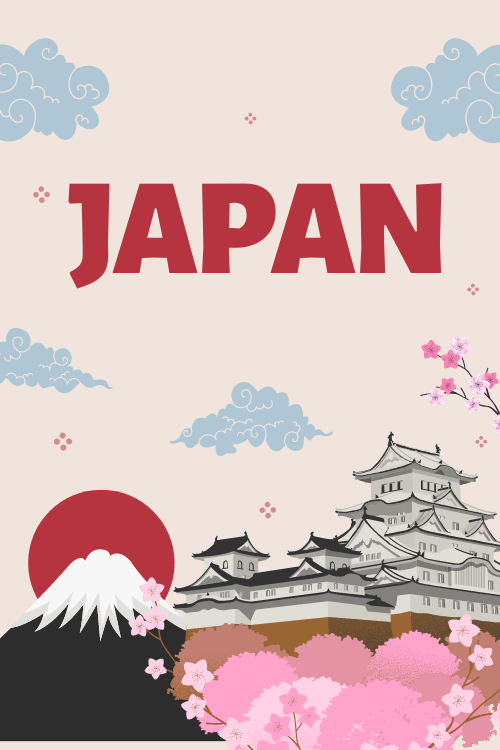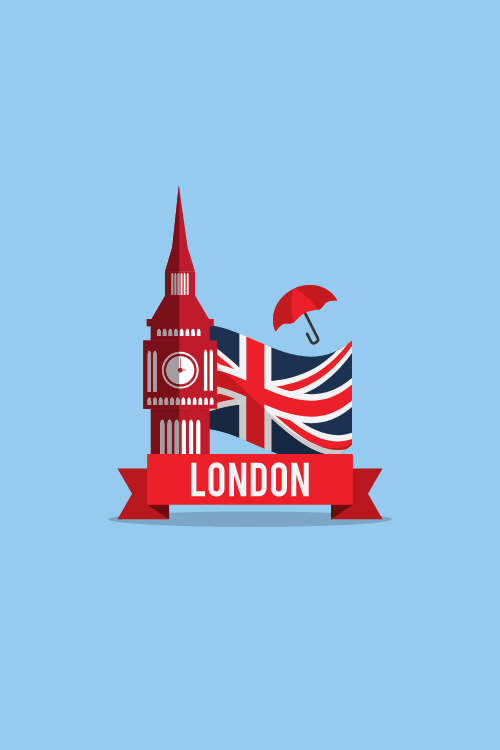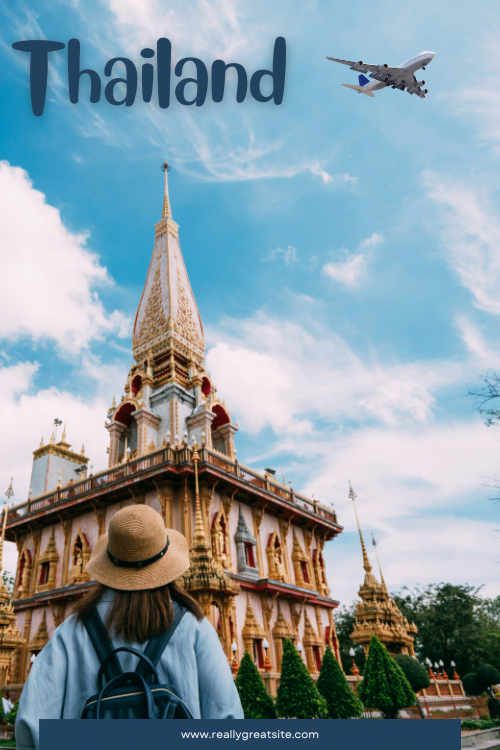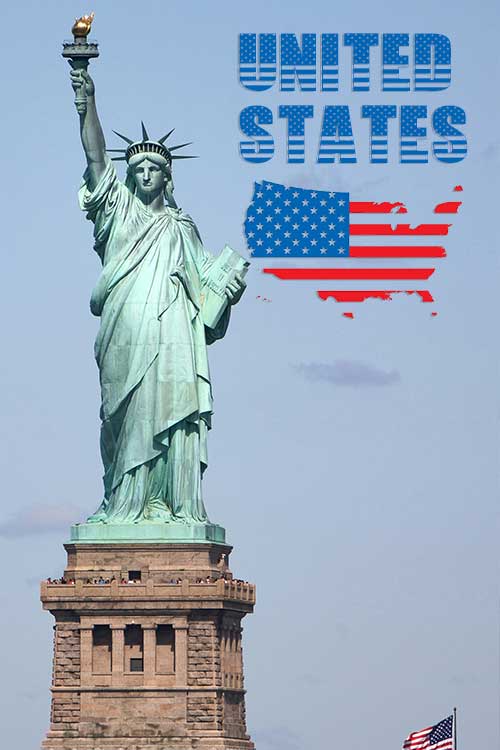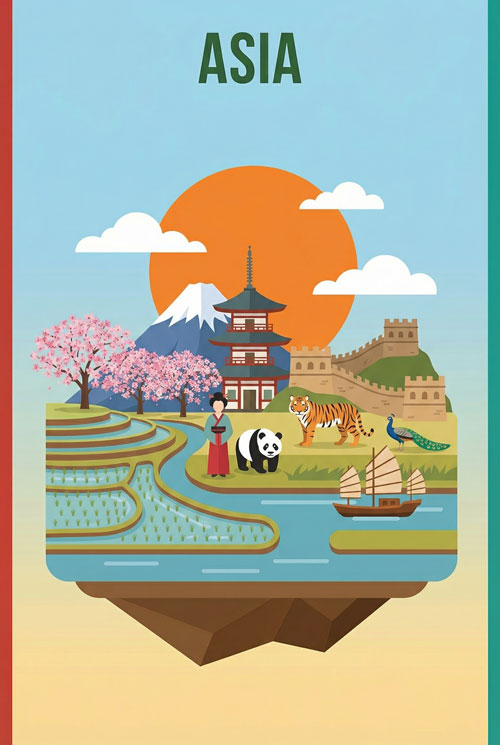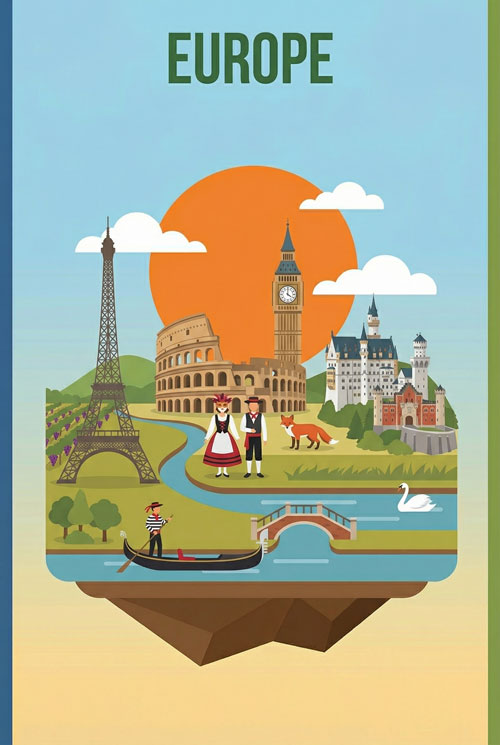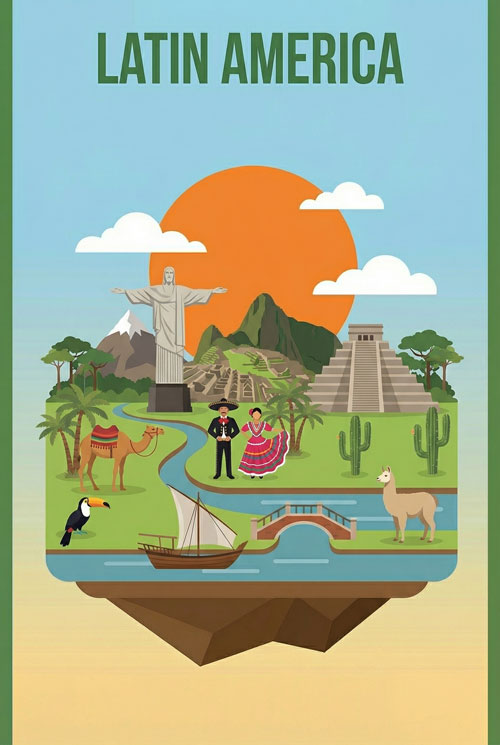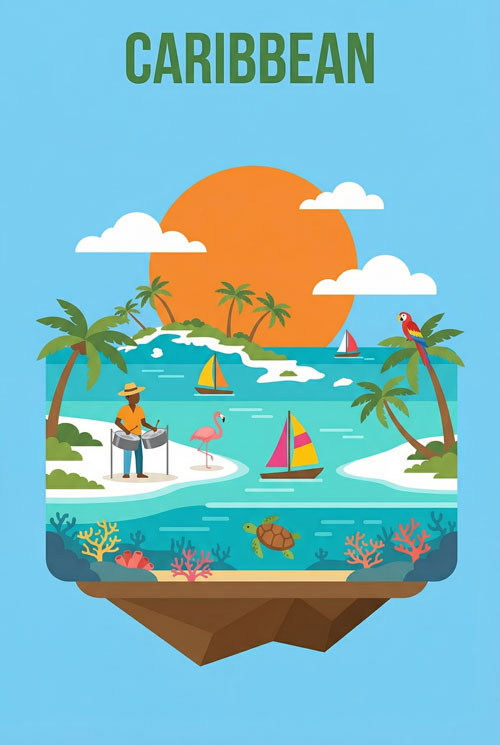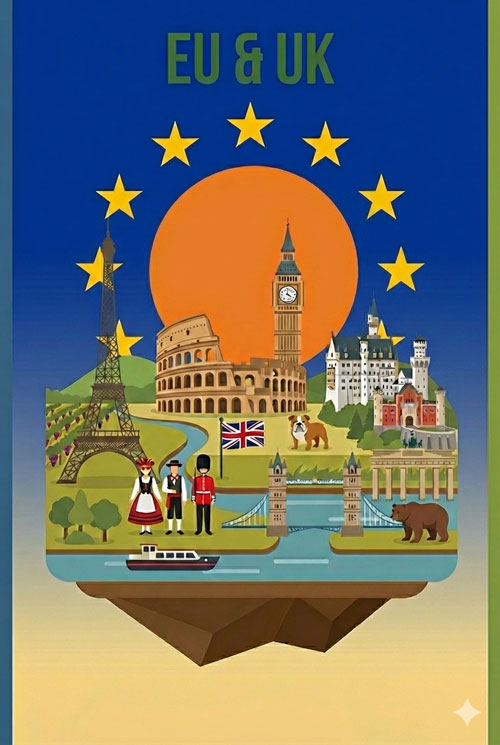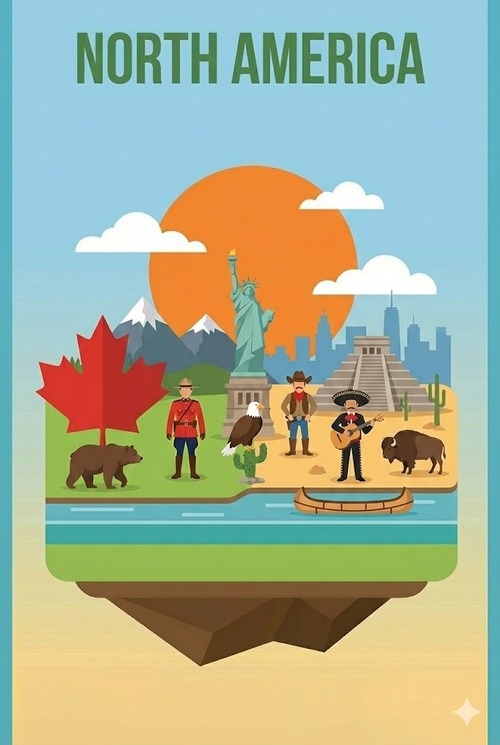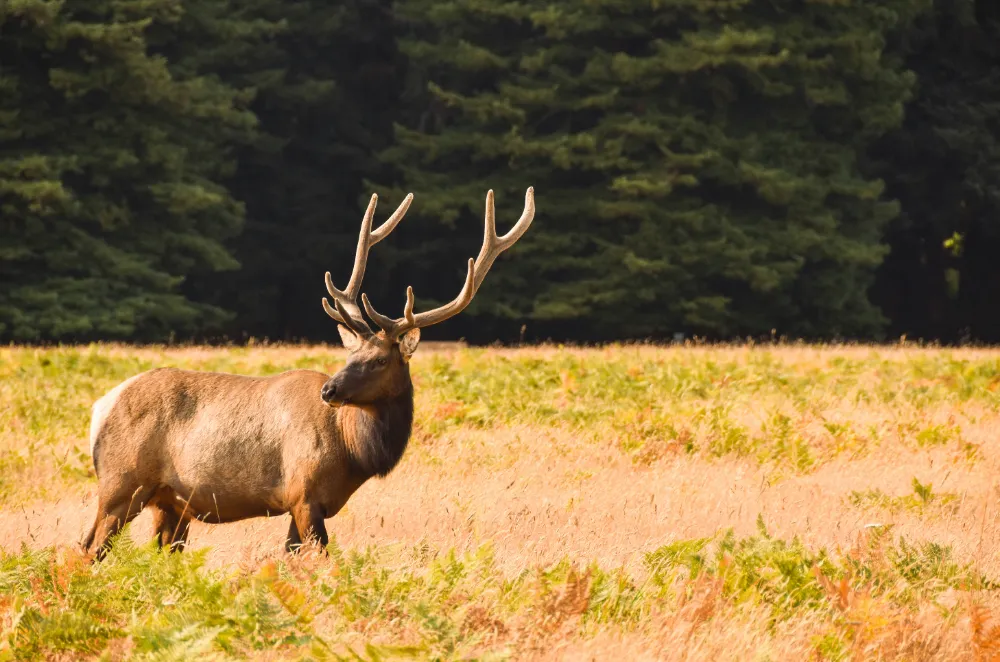eSIM USA
Best Time to Visit Redwood National Park
Everyone will tell you summer is the best time to visit the redwoods.
The “best” time to visit Redwood National and State Parks doesn’t exist as some universal truth.
But the perfect time for your specific priorities, whether that’s dramatic photography, family-friendly weather, rock-bottom prices, or blissful solitude, absolutely does.
This guide will help you find it, plan it, and pull it off flawlessly.
At a Glance: Best Time to Visit Redwood National Park by Month
Here’s your 30-second answer. Choose your priority, find your month:
| Month | Avg Temps (°F) | Rainy Days | Crowd Level | Avg Hotel Cost | Best For |
|---|---|---|---|---|---|
| January | 45-56° | 11 days | ★☆☆☆☆ | $70-90 | Budget travelers, storm watchers, ultimate solitude |
| February | 46-57° | 10 days | ★☆☆☆☆ | $70-90 | Photographers (moody fog), off-season adventurers |
| March | 47-58° | 10 days | ★★☆☆☆ | $80-100 | Budget-conscious, early wildflowers, smaller crowds |
| April | 48-60° | 7 days | ★★☆☆☆ | $90-120 | Spring blooms, comfortable temps, manageable crowds |
| May | 51-63° | 5 days | ★★★☆☆ | $110-150 | Rhododendron peak, ideal weather, families |
| June | 54-66° | 2 days | ★★★★☆ | $130-180 | Driest month, warmest temps, wildflowers |
| July | 56-67° | 1 day | ★★★★★ | $150-250 | Peak crowds, guaranteed sun, warmest weather |
| August | 56-68° | 1 day | ★★★★★ | $150-250 | Similar to July, slightly warmer inland |
| September | 55-67° | 2 days | ★★★☆☆ | $120-160 | Secret season—summer weather, fewer crowds |
| October | 52-63° | 5 days | ★★☆☆☆ | $90-120 | Elk rut viewing, fall colors (minimal), mushrooms |
| November | 49-59° | 9 days | ★☆☆☆☆ | $70-95 | Storm season begins, serious solitude, mushroom foraging |
| December | 46-56° | 11 days | ★☆☆☆☆ | $70-90 | Holiday escape, winter magic, lowest prices |
The TL;DR: May and September offer the best weather-to-crowd ratio. July-August guarantee sunshine but bring traffic jams. January-March deliver unbeatable prices and solitude if you embrace the rain. October is the secret weapon for wildlife and fall ambiance.
Stop Overpaying in Roaming Fees (Or Wasting Time Hunting for Local SIM Cards)
Overseas travel often means choosing between outrageous roaming charges or scrambling for local SIM cards the moment you land.
One drains your budget. The other steals time away from your holiday.
Smart travelers are now switching over to eSIMs.
eSIMs give you data at a fraction of the cost of what your telco charges for roaming and most modern phones have eSIM technology set up – (although you’ll need to check your phone’s compatibility here).
How eSIM4.com Works:
- Step 1: Pick your destination and data plan
- Step 2: Scan our QR code (takes 3 minutes)
- Step 3: Land overseas with instant local network access
No queues. No tiny plastic cards. No bill shock.
Just seamless, affordable data from the moment you land.
Stop letting phone companies raid your travel budget. Join the smart travelers who’ve already switched.
Get Your eSIM NowUnderstanding Redwood Weather & Microclimates
Before you dismiss winter or embrace summer based on generic seasonal advice, you need to understand something most visitors miss: Redwood National and State Parks aren’t one uniform climate zone. The coastal areas and inland groves can feel like different worlds on the same day.
The Microclimate
Coastal Areas (Prairie Creek, Gold Bluffs Beach, Coastal Drive):
- Summer: Often 10-15°F cooler than inland, persistent morning fog, can feel downright chilly in July
- Winter: Windier, wetter, more dramatic—this is where Pacific storms slam into the coastline
- Best for: Photography (fog creates magic), storm watching, cooling off in summer heat
Inland Areas (Jedediah Smith, Howland Hill Road, Tall Trees Grove):
- Summer: Warmer, sunnier, less fog penetration—can reach 75-80°F on hot days
- Winter: More protected from wind, drier conditions despite still-frequent rain
- Best for: Comfortable hiking in summer, more tolerable conditions in winter
Strategic Routing: If you’re visiting in scorching August, start your day inland at Jedediah Smith by 7am, then migrate to coastal areas (Damnation Creek Trail, Gold Bluffs Beach) by afternoon for natural air conditioning. In February, prioritize inland groves where you’re more sheltered from the worst Pacific storms.
The Fog
Here’s what photography guides gloss over: the iconic “redwood experience” you’ve seen in photos—those cathedral-like light beams piercing through towering trees? That’s fog. Specifically, coastal fog that rolls in most reliably from June through August in the early morning hours.
Summer visitors often complain about fog “ruining” their experience. Those are the people taking snapshots. Photographers know the truth: foggy, overcast days create the best redwood images. Harsh summer sun creates blown-out highlights and ugly shadows. Fog provides soft, even light that makes the green foliage absolutely pop.
Fog Timing by Season:
- Summer (June-August): Thick marine layer most mornings, usually burns off by 11am-2pm inland, persists all day at coast
- Fall (September-November): Less predictable, occasional foggy mornings
- Winter (December-March): Fog often replaced by actual clouds and rain, but misty mornings still happen
- Spring (April-May): Transitional—some foggy mornings, increasingly sunny afternoons
The Rainfall
The stats say the area gets 60-80 inches of rain annually, with 75% falling November through March. But here’s what matters more than total rainfall: rainy days.
January averages 11 rainy days. That sounds oppressive until you realize it also means 20 non-rainy days. And “rainy day” often means showers with breaks, not 24 hours of downpour. Meanwhile, June averages just 2 rainy days—but when those systems roll in, they can be surprise storms that drench unprepared summer visitors who assumed it never rains.
Winter Rain Reality Check: Yes, you’ll get wet. But trails are muddy year-round anyway (the forest floor never fully dries), and proper rain gear transforms the experience from miserable to magical. There’s something profound about standing in an ancient grove during a gentle rain, hearing drops patter on ferns while you’re the only person for miles.
Wildlife Seasonality
Roosevelt Elk: Most visible September-November (rutting season—bulls bugle and spar) and March-May (calving season). Congregate in meadows at Elk Prairie and Gold Bluffs Beach. Early morning and dusk viewing best year-round.
Banana Slugs: Emerge after first substantial fall rains (October-November) and remain active through spring. Summer heat sends them into dormancy.
Salmon Runs: Fall and winter (October-January) in Klamath River and coastal creeks. Best viewing after first rains when water levels rise.
Gray Whales: Migrate past the coast December-April. Viewable from coastal overlooks like Klamath Overlook and High Bluff Overlook.
Best Time to Visit Redwood National Park: Month-by-Month Deep Dive
Visiting Redwood National Park in January
The Vibe: January is the redwoods at their moodiest—swollen creeks, dramatic fog banks, and trails you’ll have almost entirely to yourself. This is the month for travelers who want pure, unfiltered connection with ancient forests, not Instagram crowds.
Weather:
- Average temps: 45-56°F (bring layers—mornings are cold)
- Rainy days: ~11 (but often means periodic showers, not all-day deluge)
- Sunrise/sunset: 7:30am/5pm (short days mean efficient planning required)
- Fog likelihood: Moderate, often replaced by actual storm systems
Crowd Analysis: NPS visitor stats show January sees roughly 15% of summer’s traffic. Translation: Lady Bird Johnson Grove parking lot holds 5-10 cars max versus 50+ in July. You’ll encounter other hardy souls at popular trailheads, but you’ll have long stretches of trails entirely to yourself.
What’s Good This Month:
- Waterfall Season: Prairie Creek and side streams are raging—spectacular but requires careful footing
- Storm Watching: Gold Bluffs Beach and Crescent Beach offer dramatic Pacific storm viewing (from safe vantage points)
- Banana Slug Activity: Post-rain emergence means forest floor crawls with these charismatic mollusks
- Lodging Costs: Hotels in Crescent City drop to $70-90/night versus $150-250 in summer—you’ll save $200+ on a 3-night trip
The Trade-Offs:
- You will get rained on. Period. Waterproof everything.
- Short daylight means 9am-4pm hiking window realistically
- Some backcountry roads (Howland Hill Road) may be muddy/impassable after heavy rain—check alerts
- Fern Canyon access can be dicey—Gold Bluffs Beach Road sometimes closes due to high water
Insider Tip: Visit Tall Trees Grove on a weekday morning—you might be completely alone in what summer crowds treat like Disneyland. The permit system still applies, but January walk-ups are virtually guaranteed. Bring microspikes if there’s been a rare freeze (uncommon but possible).
Best Spots This Month: Jedediah Smith Redwoods (most sheltered from storms), Stout Grove (magical in rain), Simpson-Reed Trail (wheelchair accessible, protected, stunning even in downpour).
Visiting Redwood National Park in February
The Vibe: February is January’s slightly friendlier sibling—still dramatic and moody, but you’ll catch more sunny breaks between systems. This is prime time for photographers chasing god rays and travelers who want profound solitude without quite as much rain.
Weather:
- Average temps: 46-57°F (marginally warmer than January, barely noticeable)
- Rainy days: ~10 (one fewer rainy day matters more than you’d think)
- Sunrise/sunset: 7am/5:45pm (gaining precious daylight)
- Fog likelihood: High on clear mornings after rain—perfect for photography
Crowd Levels: Still dead quiet. February actually sees fewer visitors than January because it lacks holiday traffic. You’re competing with only the most dedicated nature lovers and photographers.
What’s Good This Month:
- God Rays Photography: Clear mornings after rain create spectacular light beams through fog at Stout Grove and Tall Trees Grove (arrive by 7:30am)
- Elk Behavior: Bulls have dropped antlers but are still congregating in herds at Elk Prairie—easier viewing than summer when they disperse
- Mushroom Season Peak: Forest floor explodes with fungi diversity—oyster mushrooms, chanterelles (look, don’t pick without expertise), and countless photogenic varieties
- Valentine’s Escape: Surprisingly romantic for couples seeking a unique getaway—cozy lodges, misty forests, zero crowds
The Trade-Offs:
- Weather is still unpredictable—you need backup indoor plans (Trees of Mystery, visitor centers)
- Cold hands are real—bring quality gloves for hiking
- Some trails remain very muddy, especially Fern Canyon and lower-elevation paths
Insider Tip: This is the best month to tackle Boy Scout Tree Trail via Howland Hill Road. The unpaved road scares people year-round, but it’s often in better condition in February than after spring thaw. Drive slow, embrace the adventure, and you’ll likely have this cathedral-like trail to yourself. The massive Boy Scout Tree at trail’s end feels even more humbling in winter solitude.
Best Spots This Month: Boy Scout Tree Trail (solitude guaranteed), Cathedral Trees Trail (dramatic fog effects), Elk Prairie (winter herd viewing).
Visiting Redwood National Park in March
The Vibe: March is transition season—winter storms start spacing out, days are noticeably longer, and early wildflowers begin emerging. You’re catching the tail end of low-season prices while weather becomes increasingly cooperative.
Weather:
- Average temps: 47-58°F (finally breaking through to comfortable hiking temps)
- Rainy days: ~10 (still wet, but storms less intense than deep winter)
- Sunrise/sunset: 6:15am/6:30pm (now you’ve got real daylight to work with)
- Fog likelihood: Transitional—some foggy mornings, increasingly sunny afternoons
Crowd Levels: Crowds remain minimal through mid-March, then spring breakers start appearing late in the month. Still only ★★☆☆☆ overall—you’ll see more people than winter, but nothing compared to summer chaos.
What’s Good This Month:
- Wildflower Emergence: Trillium and other early bloomers start appearing in lower-elevation forests
- Budget Sweet Spot: Hotels still in $80-100 range before spring price hikes, camping opens at some sites
- Trail Conditions Improving: Mud persists but is less swampy than deep winter
- Salmon Fry: Creeks teem with juvenile salmon—look for them in shallow pools
The Trade-Offs:
- Weather remains unpredictable—you might get glorious sunshine or multi-day rain systems
- Road washouts from late-season storms can still close routes like Howland Hill or Gold Bluffs Beach access (check NPS alerts)
- Camping is opening but not fully operational—some loops remain closed
Insider Tip: Late March is when campground reservations open for September dates (6 months in advance). If you’re planning a September trip—the secret best month—set your alarm for 7am PT on March’s corresponding date and book Elk Prairie or Jedediah Smith immediately. September weekends sell out fast despite being “shoulder season.”
Best Spots This Month: Newton B. Drury Scenic Parkway (increasingly scenic as spring arrives), Prairie Creek trails (wildflower spotting), Tall Trees Grove (permits easier to get, improving weather).
Visiting Redwood National Park in April
The Vibe: April is when the redwoods wake up. Wildflowers carpet the forest floor, ferns unfurl fresh growth, and weather becomes genuinely pleasant—though you’ll still want rain backup plans.
Weather:
- Average temps: 48-60°F (legitimately comfortable for full-day hiking)
- Rainy days: ~7 (noticeably fewer wet days, more multi-day clear stretches)
- Sunrise/sunset: 5:30am/7:15pm (long days mean ambitious itineraries possible)
- Fog likelihood: Decreasing, though coastal areas still see morning marine layer
Crowd Levels: Crowds tick up to ★★☆☆☆ as families target spring break and weather-conscious visitors emerge. Popular trailheads see 15-20 cars at midday versus 5-10 in winter, but it’s still remarkably peaceful compared to summer.
What’s Good This Month:
- Wildflower Peak: Trillium, calypso orchids, and forest floor flowers at their showiest—look for western trillium along Damnation Creek Trail and Lady Bird Johnson Grove
- Rhododendron Preview: Early blooms start appearing in sheltered groves (peak is May, but late April catches the vanguard)
- Baby Elk: Calving season means adorable elk calves at Elk Prairie and Gold Bluffs Beach—keep distance, mothers are protective
- Waterfalls Still Flowing: Creeks remain robust from winter rains but trails are drying out enough for comfortable hiking
- Camping Opens: Most campgrounds fully operational by mid-April—book ahead for weekends
The Trade-Offs:
- Weather is bipolar—you might get 70°F sunshine Tuesday and 50°F drizzle Thursday
- Spring break crowds target late April (especially Easter week if it falls late)
- Mosquitoes emerge in wetter areas, though they’re never as bad as northern forests
Insider Tip: April is when whales are still migrating northward. Hit Klamath Overlook or High Bluff Overlook around 9-10am—gray whales travel close to shore and you’ll spot spouts without needing binoculars. Combine whale watching with a morning hike at Coastal Trail for a perfect day.
Best Spots This Month: Damnation Creek Trail (wildflowers and ocean views), Lady Bird Johnson Grove (trillium everywhere), Coastal Trail sections (whale watching + hiking).
Visiting Redwood National Park in May
The Vibe: May is when the redwoods show off. Rhododendrons explode in shocking pink blooms, weather is consistently gorgeous, and crowds remain manageable. This is the month that converts skeptics into redwood devotees.
Weather:
- Average temps: 51-63°F (perfect hiking weather—shorts or pants both work)
- Rainy days: ~5 (mostly brief passing showers, rarely all-day rain)
- Sunrise/sunset: 5am/7:45pm (gloriously long days—you can hike until 8pm)
- Fog likelihood: Moderate mornings at coast, sunny afternoons inland
Crowd Levels: Crowds reach ★★★☆☆ as families target the long Memorial Day weekend, but weekdays remain blissfully quiet. You’re threading the needle between spring’s emptiness and summer’s chaos—exactly where you want to be.
What’s Good This Month:
- Rhododendron Peak: Late May is THE time for these massive pink blooms—Damnation Creek Trail and Cathedral Trees become tunnels of flowers
- Best Weather-to-Crowd Ratio: Arguably the sweet spot of the entire year—summer weather without summer hordes
- Elk Calves: Still visible and now mobile—watching them frolic in Elk Prairie meadows at sunrise is genuinely moving
- Accessible Camping: All campgrounds open and bookable but not yet slammed (weekdays especially)
- Fern Canyon Reopens: Access road typically opens mid-May after winter closures—check exact dates
The Trade-Offs:
- Memorial Day weekend (late May) brings the first real crowd surge—book lodging months ahead
- Prices creep up toward summer rates, especially over the holiday weekend
- Coastal areas can still be chilly and foggy—bring layers despite “spring” label
Insider Tip: The week between Mother’s Day and Memorial Day is the single best week of the year for families with school-age kids (if you can swing it). Weather is ideal, rhododendrons are peak, crowds are minimal weekdays, and you’ll save $50-100/night versus summer. Book a cabin at Elk Meadow Cabins in Orick and your kids will remember this trip forever.
Best Spots This Month: Damnation Creek Trail (rhododendron tunnel), Cathedral Trees Trail (flowers + solitude), Fern Canyon (just reopened, not yet crowded), James Irvine Trail to Fern Canyon (10-mile loop perfection)
Visiting Redwood National Park in June
The Vibe: June is when California’s perfect weather reputation actually delivers. This is peak hiking season—warm temperatures, minimal rain, long days, and forests at their most lush. It’s also when parking lots start requiring strategic timing.
Weather:
- Average temps: 54-66°F (ideal for all-day hiking, though coastal areas stay cool)
- Rainy days: ~2 (statistically the driest month—rain is rare and brief)
- Sunrise/sunset: 4:45am/8pm (maximum daylight—plan accordingly)
- Fog likelihood: High mornings at coast (perfect for photography), burns off midday inland
Crowd Analysis: Jumps to ★★★★☆ as school lets out nationwide. Early June weekdays are still manageable, but post-June 15th brings serious traffic. Popular trailheads (Lady Bird Johnson, Tall Trees, Fern Canyon) fill by 10am on weekends.
What’s Good This Month:
- Guaranteed Good Weather: If you absolutely cannot risk rain, June is your month—2 rainy days means 28 dry ones
- Wildflower Finale: Late-season blooms plus lingering rhododendrons create a floral grand finale
- Warm Ocean (Relatively): “Warm” means 54-56°F—still frigid but technically warmest it gets (Gold Bluffs Beach for the brave)
- Full Park Access: Every road, trail, and facility is open and operational
- Wildlife Activity: Elk with calves, active banana slugs, birds nesting—forest feels alive
The Trade-Offs:
- Crowds arrive in force late June—expect parking lot competitions at popular sites
- Lodging prices jump to $130-180/night, campgrounds book solid weekends
- Coastal fog can persist all day at beaches, frustrating sunbathers
- Tall Trees Grove permits (50/day) start requiring early arrival or advance planning
Insider Tip: The secret to June is attacking popular trails at crack of dawn. I’m talking 6:30am arrival at Lady Bird Johnson Grove or Fern Canyon. You’ll have an hour of magical solitude before the crowds arrive, plus you’ll catch the best light and wildlife activity. By 10am when parking lots are full, you’re finishing up and heading to less-visited spots like Simpson-Reed or Stout Grove.
Best Spots This Month: Any trail if you go early; specifically Fern Canyon (morning only), Tall Trees Grove (permit required, arrive by 8am), Boy Scout Tree Trail (still overlooked despite June crowds)
Visiting Redwood National Park in July
The Vibe: July is peak everything—peak crowds, peak prices, peak sunshine, and peak frustration if you don’t plan strategically. This is the month tourists think they “should” visit. It’s also when locals avoid like the plague.
Weather:
- Average temps: 56-67°F (warmest month, though coastal areas stay surprisingly cool)
- Rainy days: ~1 (essentially guaranteed sunshine)
- Sunrise/sunset: 5am/8pm (still long, glorious days)
- Fog likelihood: Very high at coast in mornings, reliable afternoon sun inland
Crowd Analysis: ★★★★★—this is it, folks. Peak crowds. Lady Bird Johnson Grove parking lot by 9am? Forget it. Fern Canyon at noon? Prepare to share the trail with 100+ people. This isn’t an exaggeration. July weekend visitor counts are 8-10x winter levels.
What’s Good This Month:
- Weather Certainty: Booking a July trip means near-zero weather risk—ideal if you’re traveling far or have inflexible vacation time
- Warmest Temps: Best month for camping comfort and afternoon swims at freshwater rivers (not ocean—still freezing)
- Full Facility Operations: Every visitor center, ranger program, and shuttle service running at capacity
- Guaranteed Park Access: No road closures, no weather concerns, everything’s open
The Trade-Offs:
- Crowds are genuinely oppressive at popular sites—you’ll wait for parking, share trails with tour groups, queue for restrooms
- Lodging costs peak at $150-250/night minimum—book 3-6 months ahead or settle for 30+ miles away
- Campground reservations essential—walk-up camping is essentially impossible weekends
- Coastal chill surprises visitors—people arrive in tank tops and freeze at Gold Bluffs Beach in 55°F fog
Insider Tip: Here’s how to survive July: inverse the typical tourist schedule. While everyone’s arriving at 10am, you’re hitting the popular trails at 6:30am. By 11am when parking lots are circuses, retreat to forgotten gems: Stout Grove (requires driving unpaved Howland Hill), Simpson-Reed (wheelchair accessible but overlooked), or Mill Creek Trail (gorgeous and empty because it’s not in the main park). Have lunch, nap in the cool forest, then hit major sites again after 4pm when day-trippers head to dinner.
Alternatively: embrace the coastal fog. When inland areas are warm and crowded, Coastal Trail sections and Damnation Creek are cool, foggy, and surprisingly peaceful because everyone’s chasing sunshine inland.
Best Spots This Month: Early morning anywhere popular; midday at Stout Grove, Simpson-Reed, Mill Creek Trail; late afternoon returns to major groves; any coastal trail midday when others avoid fog.
Visiting Redwood National Park in August
The Vibe: August is July’s clone with one key difference: it’s marginally warmer inland, which makes coastal areas even more appealing as natural air conditioning. Otherwise, everything from July applies—crowds, costs, and strategies.
Weather:
- Average temps: 56-68°F (1-2° warmer than July, most noticeable inland)
- Rainy days: ~1 (essentially identical to July)
- Sunrise/sunset: 5:30am/7:30pm (losing daylight but still plenty)
- Fog likelihood: Still very high at coast, reliable burning off inland
Crowd Levels: ★★★★★—peak continues through mid-August, slight tapering after schools start (typically third week of August in California, varies elsewhere). Labor Day weekend brings one final surge.
What’s Good This Month:
- Warmest Overall: Best month for comfortable camping and river swimming (Smith River, Klamath River)
- Established Routines: If you visited in July, August offers familiarity; if you missed July, it’s a second chance
- Late-Summer Wildlife: Elk herds start forming up at Elk Prairie—early signs of rutting season
- Berry Season: Huckleberries and other wild berries ripen along trails (sample but don’t gorge—leave for wildlife)
The Trade-Offs:
- Everything from July applies—crowds, costs, parking nightmares at popular sites
- Vegetation reaches peak density—some trails feel more overgrown than earlier months
- Banana slugs retreat into dormancy in dry areas during hot spells
Insider Tip: Late August (post-August 20th) is when savvy travelers start appearing. School starts for many districts, crowds drop 30-40% immediately, but weather remains summer-perfect. If you have flexibility, target August 20-31 over earlier in the month. Hotels notice the drop and sometimes reduce rates slightly.
Best Spots This Month: Same as July—early mornings at popular spots, midday at overlooked trails, coastal areas for cooling off
Visiting Redwood National Park in September
The Vibe: September is the secret weapon. This is what May promises and July ruins—summer weather with manageable crowds and dropping prices. If you have any flexibility in your schedule, circle September in red ink.
Weather:
- Average temps: 55-67°F (essentially identical to July/August)
- Rainy days: ~2 (barely any increase from summer, functionally still dry)
- Sunrise/sunset: 6am/6:45pm (shorter but still ample daylight)
- Fog likelihood: Moderate—less predictable than July but still common
Crowd Analysis: Drops to ★★★☆☆—schools are in session, families are home, and only experienced travelers who know September’s secret are visiting. Weekdays especially feel like having the park to yourself again.
What’s Good This Month:
- Best Month of the Year: I’m calling it—September offers the ideal balance of weather, crowds, and value
- Elk Rutting Season Begins: Late September brings bugling bulls and sparring contests—incredibly photogenic and thrilling
- Summer Weather Continues: Statistically almost identical to August but with 50% fewer people
- Prices Drop: Hotels fall to $120-160/night (savings of $50-100/night versus peak summer)
- Mushroom Season Returns: First fall rains (if they come) bring mushrooms back to forest floors
- Photography Magic: Lower sun angle creates better light than harsh summer rays
The Trade-Offs:
- Early September can still see weekend crowds, especially Labor Day weekend (avoid)
- Weather is slightly less predictable than July/August—you might get a rogue storm
- Some ranger programs and shuttle services reduce frequency or end after Labor Day
Insider Tip: Book September back in March (campground reservations open 6 months ahead) or wait until late August when last-minute availability opens up. Target mid-September (10th-25th) for the absolute sweet spot—post-Labor Day crowds, pre-October rains, peak elk activity.
Stay at Elk Prairie Campground and wake up at 6am—walk to the meadow and watch bull elk bugling as mist rises off the grass. This single experience is worth the entire trip.
Best Spots This Month: Elk Prairie (elk rut viewing), any popular trail (now peaceful again), Gold Bluffs Beach (summer weather, no crowds), Tall Trees Grove (easy permit acquisition)
Visiting Redwood National Park in October
The Vibe: October is autumn’s arrival—elk are in full rut, fall colors appear (minimal but present), mushrooms carpet the forest floor, and visitors are sparse. This month rewards those who embrace slightly wetter weather for world-class wildlife viewing.
Weather:
- Average temps: 52-63°F (noticeably cooler, especially mornings)
- Rainy days: ~5 (transitioning back to wet season—bring rain gear)
- Sunrise/sunset: 6:30am/6pm (shorter days require efficient planning)
- Fog likelihood: Increasing, though often replaced by actual rain clouds
Crowd Levels: Drops to ★★☆☆☆—only serious nature lovers and photographers remain. Columbus Day/Indigenous Peoples’ Day weekend sees a minor bump, otherwise it’s quiet.
What’s Good This Month:
- Elk Rut Peak: This is THE month for bull elk—bugling echoes through Elk Prairie at dawn and dusk, sparring contests throughout the day
- Mushroom Explosion: Forest floor erupts with fungi diversity after first substantial rains—chanterelles, hedgehogs, boletes (identify properly, many are poisonous)
- Fall Colors: Limited but present—bigleaf maples along streams turn golden, vine maples in understory add orange accents
- Photography: Lower sun angles and dramatic weather create moody, atmospheric conditions
- Prices Drop: Hotels back down to $90-120/night range
The Trade-Offs:
- Weather becomes unpredictable—you might get gorgeous Indian summer days or multi-day rain systems
- Days are noticeably shorter—less hiking time available
- Some facilities reduce hours or close for season after mid-October
- Coastal areas get windier and more dramatic (good for storm watching, bad for beach walks)
Insider Tip: October is when you want a spotting scope or quality binoculars. Bull elk at Elk Prairie are visible to naked eye, but the real drama—the sparring, the posturing, the satellite bulls trying to steal cows from the harem—plays out 100-200 yards away. Camp at Elk Prairie and bring optics.
For photographers: the week after first substantial rain (typically mid-October) brings peak mushroom displays and the forest floor looks otherworldly. Combine this with fog/mist mornings and you’ll get shots impossible any other time of year.
Best Spots This Month: Elk Prairie (elk rut ground zero), Gold Bluffs Beach (elk plus storm watching), any old-growth grove (mushroom photography), Prairie Creek trails (fall colors)
Visiting Redwood National Park in November
The Vibe: November is when the redwoods return to their moody, dramatic essence. Pacific storms roll in with increasing frequency, trails empty out completely, and the forest feels primal again. This is for travelers who find beauty in wildness over comfort.
Weather:
- Average temps: 49-59°F (cooling down, definitely jacket weather)
- Rainy days: ~9 (legitimate wet season has arrived)
- Sunrise/sunset: 6:45am/5pm (short days—plan carefully)
- Fog likelihood: Moderate, often replaced by storm systems and low clouds
Crowd Levels: ★☆☆☆☆—back to profound solitude. Thanksgiving week sees a minor bump from Bay Area visitors, otherwise you’re alone.
What’s Good This Month:
- Ultimate Solitude: Major trails might see 2-3 other hikers all day
- Storm Watching: Gold Bluffs Beach and coastal overlooks offer spectacular Pacific storm viewing from safe vantage points
- Elk Bulls Still Active: Rut winds down but bulls remain visible in herds
- Mushroom Foraging Peak: Forest floor is mushroom heaven—if you know what you’re doing (or join a guided foray)
- Rock-Bottom Prices: Hotels drop to $70-95/night—save $150+ versus summer for a 3-night trip
- Salmon Runs: Klamath River and coastal creeks see returning salmon (check water levels post-rain)
The Trade-Offs:
- You will get rained on frequently—waterproof everything
- Short days mean 9am-4pm hiking window realistically
- Some backcountry roads may be muddy or temporarily closed after storms
- Limited facility hours—visitor centers and services reduce schedules
Insider Tip: November is when hardcore mushroom foragers descend on the redwoods. If you’re serious about fungi, join Humboldt Bay Mycological Society’s events or hire a guide. The forest floor diversity in November rivals tropical rainforests.
For non-foragers: this is the month to splurge on a cabin with a fireplace and hot tub. Book a place near Prairie Creek, spend mornings hiking in the rain (proper gear makes it magical, not miserable), then return to your cozy cabin for hot chocolate and card games. It’s a completely different park experience than summer—equally valid, utterly peaceful.
Best Spots This Month: Jedediah Smith Redwoods (most sheltered), Stout Grove (stunning in rain), Gold Bluffs Beach (storm watching), any old-growth grove (total solitude)
Visiting Redwood National Park in December
The Vibe: December is the redwoods’ quietest, moodiest month—short days, frequent rain, and near-total solitude create an almost mystical atmosphere. This is for travelers seeking profound nature connection or a unique holiday escape.
Weather:
- Average temps: 46-56°F (coldest month, but rarely freezing)
- Rainy days: ~11 (peak wet season—expect frequent rain)
- Sunrise/sunset: 7am/4:45pm (shortest days of the year)
- Fog likelihood: Moderate, often mixed with rain/mist/low clouds
Crowd Levels: ★☆☆☆☆—Christmas week brings a few families seeking alternative holidays, but otherwise it’s ghost town quiet.
What’s Good This Month:
- Absolute Lowest Prices: Hotels hit annual lows at $70-90/night—budget travelers score big
- Holiday Escape: Completely different from traditional holiday destinations—peaceful, natural, unplugged
- Swollen Waterfalls: Prairie Creek’s tributaries are at maximum flow—spectacular cascades
- Gray Whale Migration: Southbound migration peaks mid-December through January—excellent coastal viewing
- Winter Magic: Rain-soaked forests have an ethereal quality—every surface gleams, ferns drip, moss glows
The Trade-Offs:
- Weather is reliably wet and cool—you need serious rain gear and acceptance
- Very short days limit hiking—you’re racing sunset by 3pm
- Many facilities are closed or on reduced schedules
- Howland Hill Road and Gold Bluffs Beach Road may be impassable after heavy rain
- Holiday closures (Dec 24-25) affect some visitor centers
Insider Tip: December 26-31 is secretly lovely—the Christmas rush is over, weather often has a break between storms, and you’ll have incredible solitude. Book a cabin in Crescent City or Orick, bring books and board games, and embrace slow travel. Hike when weather allows, rest when it doesn’t, and discover that “bad weather” in the redwoods is actually just different weather.
For photographers: winter storms create dramatic light when they break—shafts of light piercing through clearing storm clouds into misty groves are portfolio-worthy moments. You have to be patient and ready, but December delivers images impossible in summer.
Best Spots This Month: Jedediah Smith campground area (most protected), Stout Grove (magic in winter rain), High Bluff Overlook (whale watching), Simpson-Reed Trail (accessible in any weather)
How to Choose Your Perfect Month (Decision Framework)
Still overwhelmed? Use this decision tree:
If you prioritize WEATHER above all else: → June, July, August, September (in that order for certainty)
If you prioritize SOLITUDE above all else: → January, February, November, December
If you want the BEST OVERALL BALANCE: → May or September (the two secret perfect months)
If you want WILDLIFE (especially elk): → October for rut, May for calves, year-round for general viewing
If you’re on a TIGHT BUDGET: → January, February, November, December (save $100-150/night on lodging)
If you’re PHOTOGRAPHY-focused: → February (god rays), May (rhododendrons), October (mushrooms + fall colors)
If you have INFLEXIBLE summer vacation: → June 1-15 (before peak crowds) or late August (after some schools start)
If you want the ULTIMATE experience regardless of weather: → February or October (dramatic conditions, incredible moments, profound solitude)
Practical Planning Tips for Any Season
Lodging Strategy
Summer (June-August):
- Book 3-6 months ahead minimum
- Expect $150-250/night near the parks
- Consider lodging in Crescent City (north) or Arcata (south) if park accommodations are full
- Campground reservations (recreation.gov) open 6 months ahead—set calendar alerts
Shoulder Season (April-May, September-October):
- Book 1-3 months ahead for best selection
- Prices drop to $90-160/night
- More last-minute availability possible
- Campgrounds easier to book but weekends still fill up
Winter (November-March):
- Can book last-minute (week or two ahead)
- Best rates of the year ($70-95/night)
- Some hotels offer winter packages or AAA discounts—always ask
- Campgrounds are first-come, first-served (no reservations) and rarely full
What to Pack (Seasonal)
Summer Essentials:
- Layers (coastal fog means 55°F mornings, 70°F inland afternoons)
- Sunscreen and hat (inland areas get serious sun)
- Water bottles (1L minimum per person)
- Light rain jacket (those 1-2 rainy days happen)
- Bug spray (mosquitoes near water features)
Winter Essentials:
- Waterproof rain jacket (non-negotiable)
- Waterproof pants (hiking in the rain requires these)
- Waterproof hiking boots (trails are muddy year-round but worse in winter)
- Extra layers (fleece + puffy jacket for cold mornings)
- Gloves and warm hat
- Microspikes (rare but possible for icy conditions)
- Quick-dry clothes (cotton kills in wet cold)
Year-Round Must-Haves:
- Sturdy hiking boots (trails are never fully dry)
- Headlamp (for early starts or long hikes)
- First aid kit
- Park map (cell service is spotty)
- Binoculars (wildlife viewing)
- Reusable water bottle
- Snacks/lunch (limited food options in parks)
How Many Days to Visit
Minimum for highlights: 2 full days (one day north groves, one day south)
Comfortable trip: 3-4 days (allows for exploration without rushing, bad weather backup)
Ideal trip: 5-7 days (can see everything, revisit favorites, handle weather variations)
Sample 3-Day Itinerary (Adaptable to Any Season):
Day 1 – North Section:
- Morning: Stout Grove (1 hour)
- Midday: Boy Scout Tree Trail via Howland Hill Road (4 hours round-trip)
- Afternoon: Simpson-Reed Trail or explore Jedediah Smith campground area
- Stay in Crescent City
Day 2 – Middle Section:
- Early morning: Elk Prairie for elk viewing (1 hour)
- Morning: Hike in Prairie Creek area—Cathedral Trees or James Irvine Trail
- Afternoon: Drive Newton B. Drury Scenic Parkway, stop at Big Tree
- Late afternoon: Fern Canyon if accessible (1.5 hours)
- Stay in Orick
Day 3 – South Section & Coast:
- Morning: Tall Trees Grove (permit required, 4 hours round-trip)
- Afternoon: Coastal overlooks (High Bluff, Klamath Overlook) for views and whale watching
- Optional: Damnation Creek Trail if time/energy permits (challenging but spectacular)
Adjust based on season—winter trips need weather backup plans, summer trips benefit from earlier starts to beat crowds.

